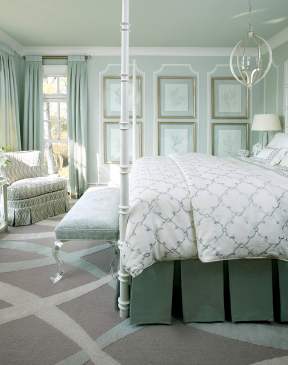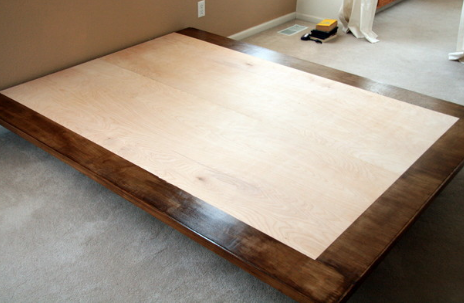

A bed frame can be a beautiful design element in your room, it plays a vital role in supporting your mattress, so it’s important for you to get a good night’s sleep. But how do you know which type of bed frame is best for you? Our guide covers the basics of how to buy a bed, including what style and size to choose, and what you need to know when choosing a spring bed, platform, and slats.

A bed frame is a scaffold that supports a mattress and its foundation. It can be as simple as a folding metal frame that locks in place to support a box spring, or as complex as an elegant piece of furniture with an integrated headboard, footrests, and side rails. Regardless of appearance, a bed frame is often used with (or includes) a mattress base, whether it’s a spring bed, platform, or slat.
A bed frame isn’t a must, but many people find it more comfortable to get in and out of an overhead mattress than a mattress placed on the floor.
1. Know your mattress size. You may know whether your mattress is a single mattress, a full mattress, a queen mattress, a king mattress, or a California king mattress. If not, measure it to confirm what standard bed frame it fits. Please note that some mattresses have long mattresses and standard length mattresses.

Typical mattress size:
2. Consider your space. Measure your room and see what bed size fits in your bedroom. Think about the other furniture you want to put in your room and how much space you’ll need to move around comfortably.
3. Find your style. Is your existing furniture traditional, modern, or eclectic? Check out the bedroom pictures and browse through the bed frames to help you zero in on your style. If you’re doing a remodeling of your entire bedroom, you can work with an interior designer to help you make your choice.
4. Consider the height of the mattress. Think about how high you want your bed to be and choose a foundation that will allow your mattress to reach the right height for you.

A good general rule of thumb is that you should be able to keep your feet flat on the ground when you sit on the edge of your mattress. Your knees and hips should be in a straight line. If your knees are higher than your hips, your bed may be too low. If your feet aren’t touching the floor, your bed is too high. This is especially important for people with limited mobility or suffering from pain.
1. Spring box. Traditionally, a box spring is a way to provide firm, horizontal support for a mattress. But the name is a bit of a misnomer, as most spring boxes today don’t actually contain springs. Instead, they are often nothing more than wooden frames covered with fabric.
“Mattresses used to be very fluffy,” says Lisa Faulkner, founder of The Beautiful Bed in Los Angeles. “You’ll have a box spring with springs in it that provide support for the mattress.” But as mattresses have become more structured over the years, spring beds have become less structured.
If your bed frame is designed to be used with a boxspring bed, then it is wise to use a boxspring bed. Otherwise, you may not need one. “Most of the beds we’re seeing now don’t need box-springs,” says Nick Allen, store manager at the Bohemian Furniture Gallery in Las Vegas. Popular platform beds usually don’t need spring beds, and neither do most slatted beds.
However, boxspring beds aren’t completely obsolete – using a boxspring bed is actually a great way to customize your mattress height. You can choose a spring bed that raises the mattress to the height that best suits you.
Keep in mind that some companies will not honor the mattress warranty if the mattress is not used with the recommended foundation.

2. Platform. Platform beds have a sturdy surface that supports the mattress. Keep in mind that a platform is not only a type of bed, but also a style (or appearance) of a bed. Some bed frames, known as platforms, actually have slats instead of a sturdy surface for support.

3. Slats. Slats are slabs that extend along the width of the bed frame. Sometimes they are interconnected. They are usually paired with a support crossbar parallel to the length of the bed frame.
Bed frames marketed with slats typically raise the mattress to a lower height than those designed for spring beds. Lower mattresses usually look more modern, so if you prefer a modern style, a bed frame with slats may be a good choice.
This type is also suitable for tenants or people who live in apartment buildings or houses with narrow stairs, as it is usually easier to carry slats up the stairs than to go up the stairs with box springs that are not maneuverable.

Cody Schultz of Eric Organic Handmade Furniture in Jordan, Minnesota, said the spacing between the slats is noted on the mattress warranty slip. If the gap is too large, the mattress will not have enough support.
Colleen Gala, co-owner of Fairhaven Furniture in New Haven, Connecticut, said foam mattresses are especially important to look out for. “The slats need to be tight enough so that the mattress doesn’t start to sag inside the slats,” says Garra.
If you’re concerned that the slats of your mattress are too far apart or that kids jumping around in bed can damage the slats, you can add a box spring, a double board, or a flat plywood or MDF to the slats of the bed frame. This provides additional support.